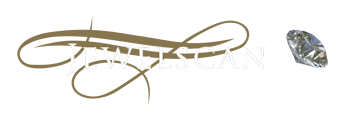A jewellery valuation must be designed to do two things. The first is to properly describe and list the value related attributes of the jewellery being valued. The second is to apply the appropriate value to these attributes.
The jewellery valuation for insurance purposes provides you with proof of ownership, detailed description and value if they are done correctly. If you read your insurance company Product Disclosure Statement, you will find your insurance company requires this information when a claim is made, or your claim can be reduced or refused.
Even if you do not have specified or portable jewellery cover with your insurer and your cover is restricted to Home & Contents, you will still need the information provided by a properly completed jewellery valuation to satisfy your insurer that you have proof of ownership, detailed description and value when you claim is made. This is very important when you consider that most jewellery is gifted or handed down and therefore receipts and other ownership documentation is rarely available when a jewellery claim is made.
The jewellery valuation must have sufficient information to allow a jeweller to accurately quote on replacing the valued item when a claim is made due to loss or theft. Therefore it is necessary to list all gems by shape, weight, colour and clarity. The type of manufacturing must be stated, the type of settings used, the type of metal, the weight and colour and purity of the metal. If these details are not recorded, your valuation for insurance purposes will be useless to you when you make a claim as the quoting jewellers will have to guess what the missing information may be. For example;
A valuation for a diamond ring that is description and value related useless may have “18k diamond ring with TDW (total diamond weight) 1.00 carat G-H Colour, VS-SI Clarity”. This really tells you nothing of any use. A proper example may be “18k white gold diamond ring with 1 x 0.50 carat G Colour, VSI Clarity, round brilliant cut & 2 x 0.25 carat G VS1 round brilliant cut Claw set in 3.50 grams cast manufacture $8,900”.
To show you the difference with how description can affect the true value and using the example above of the $8,900 ring versus the TDW description.
18k diamond ring with 1 x 0.50 carat H Colour SI3 clarity round brilliant cut & 2 x 0.25 carat H Colour SI3 Clarity round brilliant cut set in 3.50 grams cast manufacture $4,990.
We now have a ring that may be $8,900 or $4,990 depending on if the diamond colour is G or H and the Clarity is VS1 or SI3. Therefore having a valuation with colour and clarity ranges such as G-H & VS-SI are useless when determining value. The same can be said when the term TDW is used instead of numbering the different sizes and shapes of diamonds. This all affects the end value and either allows the quoting jeweller to provide either an accurate quote of nothing but a guess.
If you have a jewellery valuation that you are not sure of, send us a copy and we will let you know if it is a complete valuation or if you are missing critical information.

